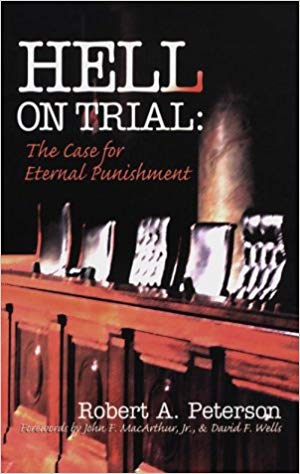A Brief Book Summary from Books At a Glance
By Clay Werner
Overview
Peterson initially outlines false views of hell and then outlines the orthodox view. He then surveys the witness of the Old Testament, of Christ in the Gospels, and the apostles in the rest of the New Testament. Church history is then explored to see which major players held to the orthodox teaching and which ones diverted from it. Two major false perspectives on hell are evaluated and criticized while the orthodox view is put forward with clarity and scriptural warrant. A final chapter explains the implications of belief in the traditional and historic view of hell.
Table of Contents:
Chapter 1: Hell on Trial
Chapter 2: The Witness of the Old Testament
Chapter 3: The Witness of the Redeemer (1): According to Matthew
Chapter 4: The Witness of the Redeemer (2): According to Mark, Luke, and John
Chapter 5: The Witness of the Apostles
Chapter 6: The Witness of Church History (1): The Early Church Through the Reformation
Chapter 7: The Witness of Church History (2): The Modern Period
Chapter 8: False Witnesses (1) Universalism
Chapter 9: False Witnesses (2): Annihilationism
Chapter 10: The Case for Eternal Punishment
Chapter 11: Other Pieces of the Puzzle
Chapter 12: What Difference Does It All Make?
Chapter 1: Hell on Trial
Scholars, pastors, and lay people alike have answered the biblical doctrine of hell with rejection while putting forward ideas that lead many to confusion. What does the Bible have to say about hell and what difference should it make in our lives? This is the concern of the book. This chapter seeks to present four views of hell- each with its leading proponent- that are not biblical and briefly outlines the main biblical argument for hell.
The first view, most adamantly put forward by Bertrand Russel, a British philosopher, is that life after death is unlikely and that the doctrine of hell is one of absolute cruelty. A second perspective, advocated by John Hick, another British philosopher, is universalism. After his interaction with generous people of all faiths, he rejected orthodox belief and has advocated that all will be saved. Clark Pinnock, a theology professor in Canada, puts forward a third view that unbelievers who did not hear the gospel in this life will get a chance to believe after death- a “postmortem encounter” with God. However, if they continue to refuse to believe, they will be annihilated. John Stott, a major evangelical leader in Britain, has now stated his own belief, a fourth perspective, that unbelievers who reject the gospel in this life will be annihilated. All of these perspectives will be elaborated more later in the book.
The last perspective is the orthodox perspective that unbelievers will suffer eternally in hell. Here, J.I. Packer is a prominent voice for this biblical view of hell. While he acknowledges that it is a hard doctrine and that he cannot take pleasure in it, yet the “overwhelming evidence” of Scripture is abundantly clear. “It is a truth that people desperately need to understand with mind and heart and soul in order that they, and their loved ones, may avoid the greatest disaster- eternal condemnation at the hands of almighty God.”
Chapter 2: The Witness of the Old Testament
Jesus himself taught the most clearly about the reality and eternality of hell. Yet, the Old Testament also sheds light on this doctrine with passages that discuss judgment, Sheol, and eternal punishment.
First, there are primary judgment passages in the Old Testament. While it does speak of the life to come, its emphasis is on this side of the grave, especially with national life. With Adam, we see the judgment of spiritual and physical death, yet the text of Genesis 3 does not speak of life after death. This is the same with the Flood in Genesis 6-9, the destruction of Sodom and Gomorrah, the plagues of Egypt, and the Assyrian and Babylonian Captivities of Israel. All of these major judgment passages have similar themes. First, they show that God is holy and punishes sinners. Second, the judgment was earthly and temporal and “did not speak of life after death or eternal destinies.” Annihilationists point to the words about destruction in these passages to bolster their view, but these passages do not speak about life after death, only the destruction of physical life.
Second, we must understand the Old Testament passages concerning Sheol. Whatever Sheol is, and there is much debate on this topic, it is clear that it is a place where both the righteous and unrighteous go after death. There are two views that have the most likely biblical warrant. One is that Sheol only refers to the grave which makes it earthly and temporal but tells us nothing of the afterlife. Another is that Sheol sometimes refers to the “netherworld to which both godly and ungodly go after death.” If this view is correct, it is a bridge between judgment passages and passages that speak of eternal punishment.
[To continue reading this summary, please see below....]The remainder of this article is premium content. Become a member to continue reading.
Already have an account? Sign In
Buy the books

HELL ON TRIAL: THE CASE FOR ETERNAL PUNISHMENT, by Robert A. Peterson